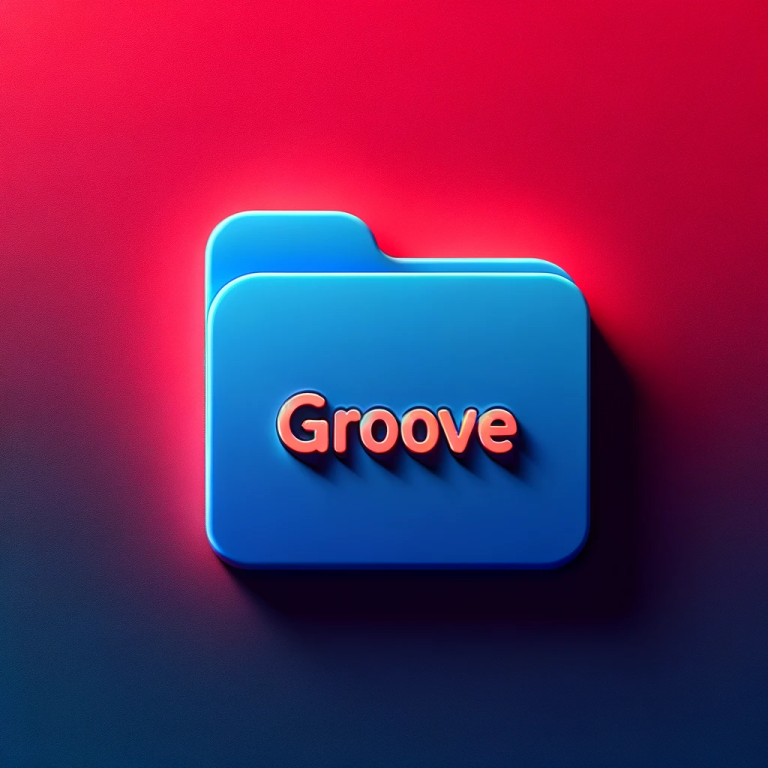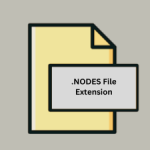.GROOVE File Extension

ACID Groove File
| Developer | MAGIX |
| Popularity | |
| Category | Audio Files |
| Format | .GROOVE |
| Cross Platform | Update Soon |
What is an GROOVE file?
In the vast landscape of file extensions, the .GROOVE file extension stands out as a lesser-known format with a fascinating history and unique capabilities.
These files are closely associated with the world of music production and are used primarily in the realm of digital audio workstations (DAWs).
In this article, we will delve into the origins, history, technical specifications, advantages, disadvantages, conversion methods, and how to open .GROOVE files across various operating systems.
More Information.
The history of the .GROOVE file extension is closely tied to the emergence of ACID as a groundbreaking music production tool. ACID was revolutionary because it introduced the concept of loop-based music creation to a broader audience.
This concept allowed musicians and producers to work with pre-recorded audio loops, enabling them to create intricate compositions without the need for extensive recording and editing.
Initially, .GROOVE files were created to be used exclusively within ACID. They served as the building blocks of music projects, offering users a vast library of loops and samples to experiment with.
These files provided an efficient way to construct music by simply dragging and dropping loops onto the timeline, where they automatically adjusted to match the project’s tempo and key.
Origin Of This File.
The .GROOVE file extension is primarily linked to the ACID software, a digital audio workstation (DAW) developed by Sony Creative Software (formerly Sonic Foundry).
ACID, which stands for “Audio Construction in Digital,” was initially released in 1998 and became immensely popular among music producers due to its innovative approach to music creation.
The .GROOVE file format was specifically designed to store audio loops, beats, and other musical elements, allowing users to create seamless and flexible compositions.
These files contain essential information about the tempo, key, and other metadata required to maintain synchronization within a project.
File Structure Technical Specification.
A typical .GROOVE file consists of a few essential components:
- Audio Data: This section contains the actual audio waveform data, representing the sound that the loop produces.
- Tempo Information: .GROOVE files store tempo information, ensuring that the loop synchronizes seamlessly with the project’s tempo.
- Key Information: The key information ensures that the loop harmonizes with other elements in the composition.
- Metadata: .GROOVE files often include metadata such as the loop’s name, creator, and copyright information.
- Waveform Visualization: Some .GROOVE files may also include a visual representation of the waveform for easier editing and manipulation within ACID.
- Loop Points: Loop points are defined to specify where a loop starts and ends, allowing for precise control during editing.
How to Convert the File?
Converting a .GROOVE file can be a bit tricky due to its proprietary nature, as it is primarily associated with Sony ACID software.
If you need to convert a .GROOVE file to a different format or make it compatible with other digital audio workstations (DAWs), here’s a general process you can follow:
- Open Sony ACID: Launch the Sony ACID software on your computer.
- Load .GROOVE File: Go to the “File” menu and select “Open.” Locate the .GROOVE file you want to convert on your computer and select it. Click “Open” to load the file into Sony ACID.
- Edit (if needed): If you need to make any adjustments or edits to the .GROOVE file before conversion, you can do so using Sony ACID’s editing tools.
- Export the .GROOVE File: Once your .GROOVE file is ready, go to the “File” menu again, but this time, select “Export.”
- Choose Output Format: In the “Export” dialog box that appears, you’ll see various export options. Select the format you want to convert the .GROOVE file into, such as WAV or MP3. This choice depends on your specific needs and compatibility requirements.
- Configure Export Settings (Optional): Depending on the format you choose, there may be additional settings to configure, such as quality, bitrate, or sample rate. Adjust these settings as per your preferences.
- Specify Output Location: Choose the folder on your computer where you want to save the converted audio file. You can do this by clicking the “Browse” or “Save As” button in the dialog box.
- Start Conversion: After configuring the export settings and specifying the output location, click the “Export” button or equivalent to initiate the conversion process.
- Wait for Conversion to Complete: Sony ACID will process the .GROOVE file, convert it into the selected format, and save it to the specified location. The time it takes for conversion depends on the file size and settings.
- Access Converted File: Once the conversion is finished, you can find the converted audio file in the folder you specified in Step 7. This file will now be in the format you selected (e.g., WAV or MP3) and ready for use in other applications or projects.
Advantages And Disadvantages.
Advantages:
- Ease of Use: .GROOVE files simplify the music creation process, making it accessible to musicians and producers of all skill levels.
- Flexibility: These files enable users to experiment with different combinations of loops, fostering creativity and innovation.
- Time-Saving: .GROOVE files significantly reduce the time required for music production by providing ready-made loops.
- Professional Sound: ACID and .GROOVE files have been used in numerous professional productions, attesting to their high-quality sound.
Disadvantages:
- Limited Compatibility: .GROOVE files are primarily compatible with ACID software, limiting their usability in other DAWs.
- File Size: Audio loops can be substantial in size, potentially consuming significant storage space.
- Overreliance: Overusing pre-made loops may hinder the development of original compositions and unique sound.
How to Open GROOVE?
Open In Windows
- Use Sony ACID software if available for Windows. Follow the steps mentioned earlier in this conversation to open and work with .GROOVE files.
- Consider using compatible audio editing software that supports .GROOVE files, such as some versions of Sony Sound Forge.
Open In Linux
- Unfortunately, Sony ACID is not natively available for Linux. You may need to use Windows emulation or virtualization software like Wine to run Sony ACID if necessary.
- Alternatively, you can explore Linux-compatible audio editing software that supports .GROOVE files, though support may be limited.
Open In MAC
- Sony ACID was not available for macOS. You may need to use Windows emulation or virtualization software to run Sony ACID on a Mac.
- Alternatively, consider using macOS-compatible DAW software that supports .GROOVE files or converting .GROOVE files to a compatible format like WAV or AIFF using a Windows machine or virtualization.
Open In Android
- Since .GROOVE files may not be directly playable on Android devices, consider converting them to a more common audio format like MP3 or WAV using a computer or an online file conversion service.
- Install a file conversion app from the Google Play Store that supports .GROOVE to MP3 or .GROOVE to WAV conversion. There are several third-party apps available for this purpose.
- Once you’ve converted the .GROOVE file to a supported format, use a media player app on your Android device to play the converted audio.
Open In IOS
- Convert the .GROOVE files to a compatible audio format (e.g., MP3, AAC) using a computer or an online file conversion tool.
- Transfer the converted files to your iOS device using iTunes or a cloud storage service.
- Play the converted audio files on your iOS device using a media player app from the App Store, such as Apple’s built-in Music app or third-party alternatives.
Open in Others
- Use cross-platform audio editing software like Audacity, Adobe Audition, or Ableton Live that support .GROOVE files. These applications are available on Windows, macOS, and some versions of Linux.
- If you need to convert .GROOVE files to another format without specialized software, you can use online file conversion services. Upload the .GROOVE file, select the desired output format, and then download the converted file.
- If you’re using an operating system that doesn’t natively support .GROOVE files (e.g., Linux), you can run Windows emulation or virtualization software like Wine or VirtualBox to use Sony ACID.













